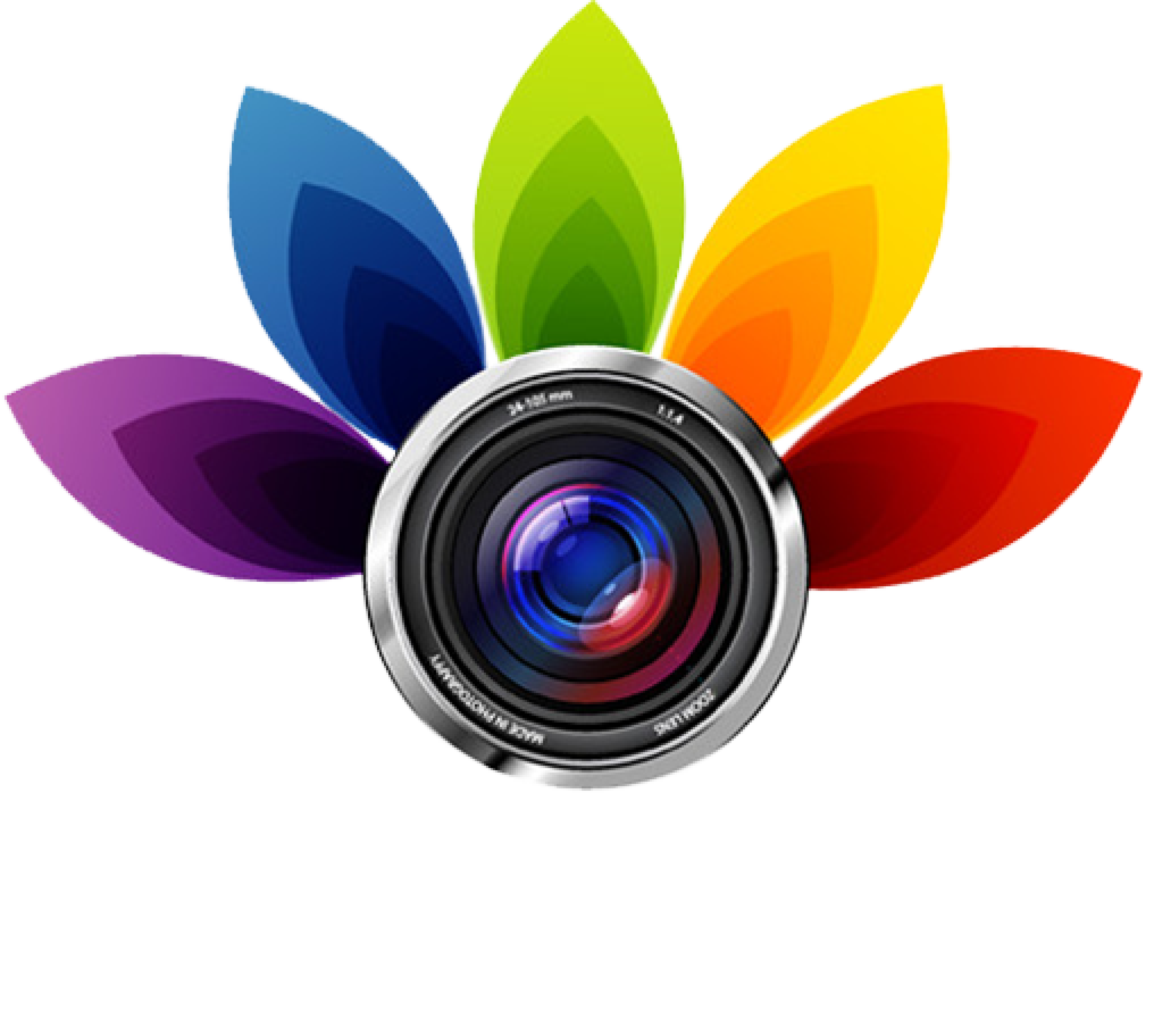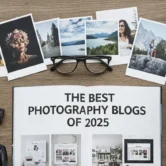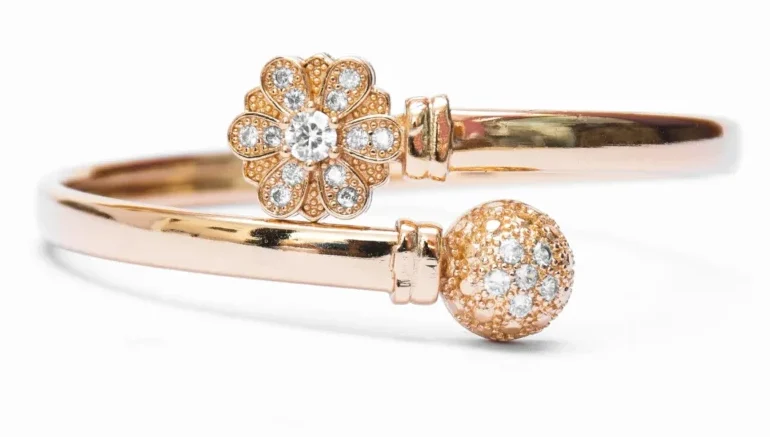
Top 10 Jewelry Photography Equipment
Jewelry photography requires the right tools to take amazing and detailed images. The most necessary jewelry photography equipment starts with a high-quality camera, which ensures sharp and clear photos. A tripod is also important, keeping your camera steady and preventing blurriness, especially when photographing small jewelry pieces up close. Proper photography lighting plays a key role, as sufficient, soft light highlights the beauty of the jewelry while avoiding harsh shadows or glare. Finally, a simple white backdrop or sheet can create a clean, professional background that allows your jewelry to truly stand out.
These tools like macro lens allow you to get very close to the jewelry and take every small detail. A mannequin bust is great for showing off necklaces and earrings, while a lightbox can help you get evenly lit photos without worrying about shadows. You may also need clamps or tape to secure props or backgrounds, keeping everything in place. Lastly, a diffuser can soften the light, reducing harsh reflections on shiny jewelry pieces. All these tools, part of the top 10 jewelry photography equipment, will help you take beautiful jewelry photos, if you’re a professional photographer or just doing it for fun.
1. Camera
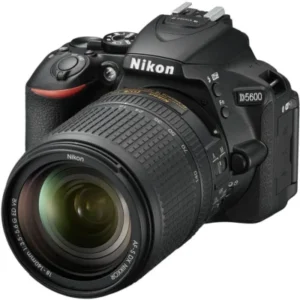
Jewelry photography requires taking every detail, from gemstone sparkle to delicate designs. A high-resolution camera helps show small items like rings or earrings. Using a quality lens ensures sharp, clear, and professional-looking photos.
Choose a camera that allows changes to shutter speed, aperture, and ISO. These controls help manage lighting and exposure. For example, increasing ISO brightens shots in low light. Learning your camera well improves results and makes your jewelry photos look amazing.
2. Tripod
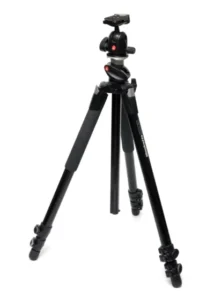
A tripod is a three-legged stand that keeps your camera steady during shoots. It’s important for jewelry photography. Close-up shots of small jewelry can easily blur from slight shakes. A tripod prevents this by keeping the camera still, ensuring clear and sharp photos. It also allows hands-free shooting with a timer or remote, avoiding camera shake when pressing the shutter button.
This is especially useful with macro lenses for taking tiny jewelry details. A tripod also makes shooting more consistent. You can adjust the camera angle once and keep the same framing and lighting. This helps when photographing multiple jewelry pieces or taking the same subject from different angles.
With less repositioning, your workflow is faster and more efficient. A tripod provides stability, clarity, and repeatable results, making it a necessary tool for professional jewelry photography.
3. Lighting Source
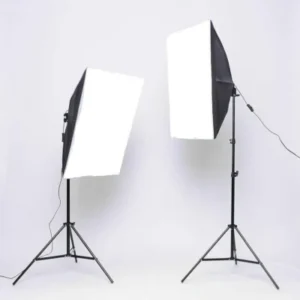 A light source is important in jewelry photography because it highlights the details and beauty of each piece. Good lighting greatly improves how jewelry appears in photos. Without enough light, images look dark and unclear.Too much light creates harsh shadows or radiant spots that hide details.
A light source is important in jewelry photography because it highlights the details and beauty of each piece. Good lighting greatly improves how jewelry appears in photos. Without enough light, images look dark and unclear.Too much light creates harsh shadows or radiant spots that hide details.
The right light ensures balanced, clear, and attractive photos. When you take jewelry photos, it’s better to use soft light. Soft light helps reduce dark shadows and gives a smooth look at the jewelry.
You can get soft lights by using soft boxes or ring lights, which spread the light on your jewelry. Natural light, like sunlight from a window, can also work well, but it can be hard to control. Using artificial light gives you more control, especially when shooting indoors.
4. Backdrop (White Sheet / Paper)
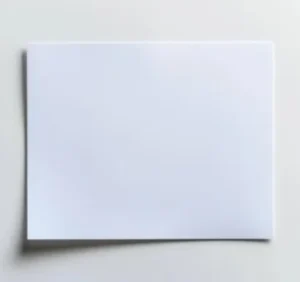
Light placement is very important in jewelry photography. The angle of light changes how jewelry appears in photos. Moving the light can improve diamond and gold shine. Adjusting the distance between light and jewelry helps achieve the best effect.
Proper lighting highlights jewelry’s beauty and creates a clean, professional look. A backdrop keeps focus on the jewelry and prevents distractions.
White sheets or paper provide clean, neutral backgrounds that make jewelry stand out. White also reflects light, brightening jewelry and reducing shadows. Black can create strong contrast, making shiny pieces pop. The key is using simple, clear backdrops that highlight jewelry without stealing attention.
5. Table
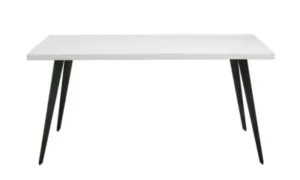
A table is necessary in jewelry photography because it provides a stable surface for jewelry and camera equipment. It must be strong to prevent shaking while shooting. A flat, solid table keeps everything steady and supports your camera, lights, and background setup. Choosing a table with neutral colors like white, black, or gray prevents distraction from jewelry.
A smooth surface avoids patterns that could affect lighting or reflections. Some photographers also use glass tables for creative light effects. The table’s size is also important. It doesn’t need to be very large but should hold jewelry, lighting, backdrop, and camera.
Extra space helps you move and adjust the setup comfortably. A reliable table keeps equipment organized, letting you focus on taking great jewelry photos instead of worrying about stability.
6. Clamps or Tape
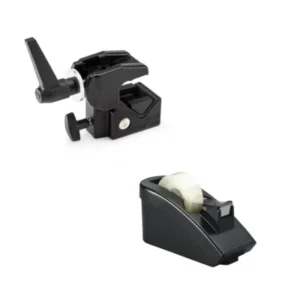
Clamps and tape are small but useful tools for jewelry photography. Clamps hold backdrops or props in place, preventing unwanted movement. They are especially helpful with fabric backdrops that shift easily. You can attach them to tables, stands, or other surfaces for a smooth, clean background. Tape also keeps jewelry or small props steady, ensuring pieces stay in the right position during shooting. It’s a quick solution for holding decorations or reflectors. Always use tape that won’t damage jewelry or backgrounds.
Both clamps and tape prevent unwanted movement during photo sessions, which is important for precise jewelry photography. They let you set everything securely, so you can focus on taking the perfect shot. These simple tools play an important role in achieving steady, professional jewelry photos. That’s why clamps and tape are included in the top 10 jewelry photography equipment.
7. A Mannequin Bust
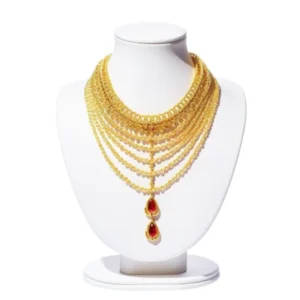
A mannequin bust represents the upper body and is often used in jewelry photography to display necklaces, earrings, and more. Its neck and shoulders help show jewelry naturally, making designs look real and attractive. Instead of laying pieces flat, a bust lets jewelry hang properly, highlighting its true shape and style. Photos taken with a mannequin bust look more lifelike, helping buyers imagine themselves wearing the jewelry. This adds warmth and appeal to product photos.
Mannequin busts come in various materials, shapes, and sizes, such as plastic, foam, or fabric-covered styles. Choosing the right type depends on your jewelry style and photo needs. Neutral colors like white, beige, or gray are ideal because they don’t distract from the jewelry. A well-chosen mannequin bust highlights details while keeping focus on the design, making it an necessary tool for professional-looking jewelry photography.
8. Macro Lens
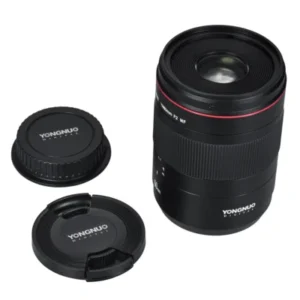 A macro lens is a special camera lens made for taking close up photos of small things like jewelry. It helps you take small details that regular lenses might not show. This is especially important in jewelry photography, where you want to highlight every small design, texture, and shine of the piece.
A macro lens is a special camera lens made for taking close up photos of small things like jewelry. It helps you take small details that regular lenses might not show. This is especially important in jewelry photography, where you want to highlight every small design, texture, and shine of the piece.
With a macro lens you can get very close to the jewelry without losing focus or clarity. Using a macro lens makes jewelry photos sharp and clear, even with small pieces like rings or earrings. It take fine details such as gemstones and designs, which buyers want to see before purchasing.
A macro lens also creates a blurred background, making jewelry stand out with less distraction. This effect adds creativity and gives photos a professional look. For serious close-up jewelry photography, a macro lens is an necessary tool.
9. Lightbox
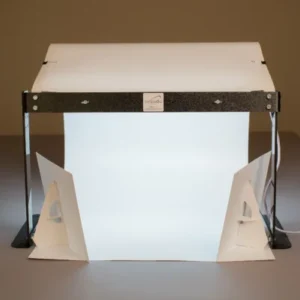
A lightbox is a small, enclosed box designed for photographing items like jewelry. Built-in lights create soft, even lighting around objects. This reduces harsh shadows and radiant spots, giving jewelry photos a clean, professional look. Lightboxes highlight details from all sides, making pieces appear sharp and clear. They also help control reflections, which are common with shiny jewelry. With steady, soft lighting, jewelry colors and details are shown more accurately and attractively.
Lightboxes are available in different sizes and are usually portable, making them easy to use anywhere. Some models even include removable backgrounds, letting you choose colors that suit your jewelry best. This flexibility allows creative, consistent results. If you’re shooting for websites, catalogs, or social media, a lightbox ensures high-quality photos every time. It’s an important tool for professional jewelry photography.
10. Diffuser
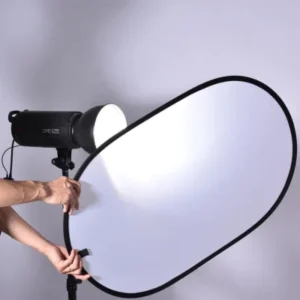
A diffuser is a tool that softens light and spreads it evenly, reducing harsh shadows. In jewelry photography, diffusers prevent radiant spots that hide details. By spreading light smoothly, they give jewelry a polished, professional look. Diffusers are especially useful for shiny pieces like silver or gold, where reflections can distract from details. Placing a diffuser between your light and jewelry controls brightness and creates balanced, attractive photos.
Diffusers come in different types, such as softboxes, fabric sheets, or plastic panels. They are simple to use and easy to add to any lighting setup. If using natural or artificial light, diffusers improve jewelry photos by reducing glare and increasing clarity. They are important for anyone serious about jewelry photography, helping create consistent, professional-quality images.
Which company is the best fit for jewelry photo retouching services?
Photo Editing Company is a one-stop solution for jewelry photo retouching services. Our experienced editors can deliver you attractive, detailed, and qualitative jewelry photos. Contact us today to improve the quality of your jewelry photos at affordable prices!
Conclusion
Having the right jewelry photography equipment is necessary for taking amazing photos. Every tool, from cameras to lightboxes, plays an important role. Accessories like macro lenses and mannequin busts highlight fine details for a professional look. Simple tools like diffusers and clamps reduce distractions and keep setups organized. With the right equipment and practice, you can create eye-catching photos that attract customers and showcase jewelry beautifully. High-quality photos greatly improve how your jewelry is seen online or in personal collections.
Read Next: Top 10 Simple Jewelry Photography Props You Can Use
